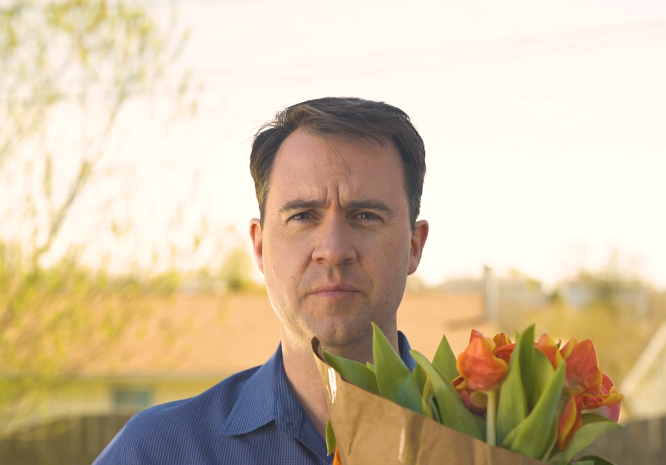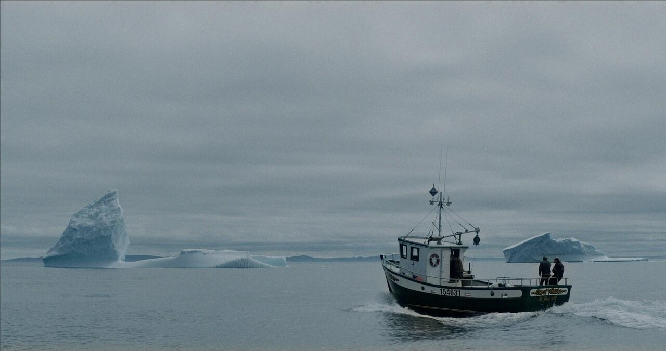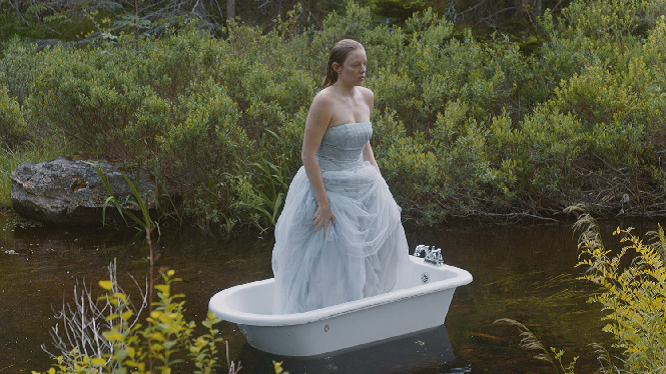
Pour accompagner notre dossier sur les cinémas de l'Atlantique canadien, une programmation inédite de courts et longs métrages provenant des maritimes.

Les cinémas de l’Atlantique sont aussi diversifiés que la région elle-même. On y retrouve des drames, des comédies, des documentaires, des films expérimentaux ; des films sur les villes et les villages ; des histoires de pêcheurs, de cols blancs, de marginaux, des films sur la nature et les animaux ou le monde qu’ont créé les humains. On l’entend aux accents et aux symboles emblématiques des peuples d’aujourd’hui et d’hier — des peuples différents du Nouveau-Brunswick à Terre-Neuve — on peut sentir l’océan, goûter la morue et le homard, sentir le charbon, écouter la musique de Cèilidh, le craquement du bois dans les maisons posées sur le sel de la mer. Les films sélectionnés pour le Panoptique vous permettront de voyager à travers l’Atlantique canadien, d’en découvrir les peines, les plaisirs et le sens de l’ironie.


LES COURTS MÉTRAGES
The Date (Taylor Olson, 2019) : Un homme et une femme, tous deux des parents divorcés, se préparent pour un rencart. Mais ils ont oublié toutes les règles, voire s’il existe encore des règles au XXIe siècle. Doivent-ils laisser leurs enfants à la maison ? Se souviennent-ils comment embrasser ? Recherchent-ils une relation amoureuse ou simplement une partie de jambes en l’air ? Leurs enfants les laisseront-ils tranquilles pour quelques minutes ? En banlieue, tout doit être négocié puisque la vie est compliquée, les gens sont compliqués, mais l’amour demeure un désir essentiel à combler.
Duck Duck Goose (Shelley Thompson, 2018) : Ça ressemble à une journée ordinaire dans une école primaire ordinaire : les élèves s’appliquent à leurs études, et leur professeure est heureuse de pouvoir leur partager ses connaissances. Et puis, l’impensable se produit, et cette dernière est forcée de prendre la décision la plus troublante de sa vie. Provoqué par de terribles circonstances, ce choix ne risque pas moins de la hanter pour le restant de ses jours. Pourra-t-elle vivre avec les conséquences si le pire venait à arriver ?
Flankers (Justin Oakey, 2014) : Une vie dure crée des hommes endurcis. Pour les pêcheurs de Terre-Neuve-et-Labrador, l’âpreté de l’existence provoque des conflits caractérisés par de durs échanges de mots… et de coups de poing. Ce genre de haine peut mener à des liaisons fragiles qui nous menacent sérieusement, d’autant plus sur un océan ténébreux.
Martha Brook Falls (Ashley Mackenzie, 2017) : Dans une vallée reculée de la Nouvelle-Écosse, une rivière coule en amont d’une chute majestueuse. La caméra saisit ces quelques images : les petites bulles dans l’eau, le reflet des arbres et du ciel sur sa surface, la sérénité et la force des flots. La rivière voit-elle ces images ? Sent-elle le vent glisser sur sa surface ? L’histoire de ce cours d’eau constitue ici une réflexion sur le temps et la matière.

LES LONGS MÉTRAGES
Body and Bones (Melanie Oates, 2019) : Tess est coincée dans sa petite ville terre-neuvienne. Elle est toujours hantée par la mort de sa mère, même si son beau-père continue à s’occuper d’elle. Mais puisque celui-ci emménage maintenant avec une nouvelle copine, et que tout ce que les garçons de l’école attendent d’elle sont des faveurs sexuelles unilatérales, Tess n’a plus d’autre refuge que la musique d’un artiste local, Danny Sharpe. Or, il s’avère que la mère de Danny est la nouvelle copine de son beau-père, et Tess tire avantage de ce lien diffus pour s’introduire de façon dramatique dans la vie de Danny. Ses frustrations quotidiennes se transforment en obsession pour le musicien, à qui l’on ne devrait sans doute pas confier une adolescente. Ce film lent brosse le portrait d’une fille qui se transforme maladroitement en femme en multipliant les décisions dangereuses.
A Fire in the Cold Season (Justin Oakey, 2019) : Scott peine à gagner sa vie comme chasseur, jusqu’au jour où il trouve un cadavre au milieu de la forêt. Il jette un coup d’œil à la carte d’identité du défunt avant de contacter la police, puis décide d’aller visiter sa copine Mona, une femme enceinte criblée de problèmes. Le plus grand d’entre eux est que son ex-copain devait de l’argent à des personnes louches, et que le baron de la pègre locale a décidé que c’est Mona qui devra payer sa dette. Scott tente de l’aider, mais se retrouve vite submergé. Même dans ces petits villages, où la vie semble désespérée, les liaisons interpersonnelles constituent une lueur d’espoir. Voici une histoire qui s’intéresse aux limites réelles et aux conséquences des comportements criminels, déployées dans une grande tapisserie qui entremêle son époque,, ses lieux et les gens qui l’habitent.
Murmur (Heather Young, 2019) : Donna est une femme qui tente de reprendre sa vie en main. Après une sentence pour conduite en état d’ébriété, elle est forcée d’effectuer des travaux communautaires dans un refuge pour animaux local . Aliénée de sa fille, qui refuse de lui parler, visiblement privée de toute relation intime et incapable d’abandonner l’alcool, Donna offre tout son amour et son attention à un vieux chien, destiné à l’euthanasie. Malgré les factures de vétérinaire, Donna décide d’adopter le chien — le réconfort et la compagnie que lui procure celui-ci la pousse à adopter encore plus d’animaux, jusqu’à ce que la situation devienne insupportable. Young crée ici un nouveau genre de réalisme social dédié à représenter la solitude des gens qui peinent à réintégrer la société.
